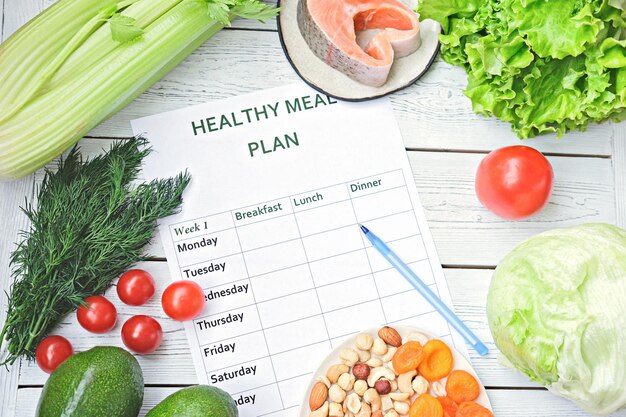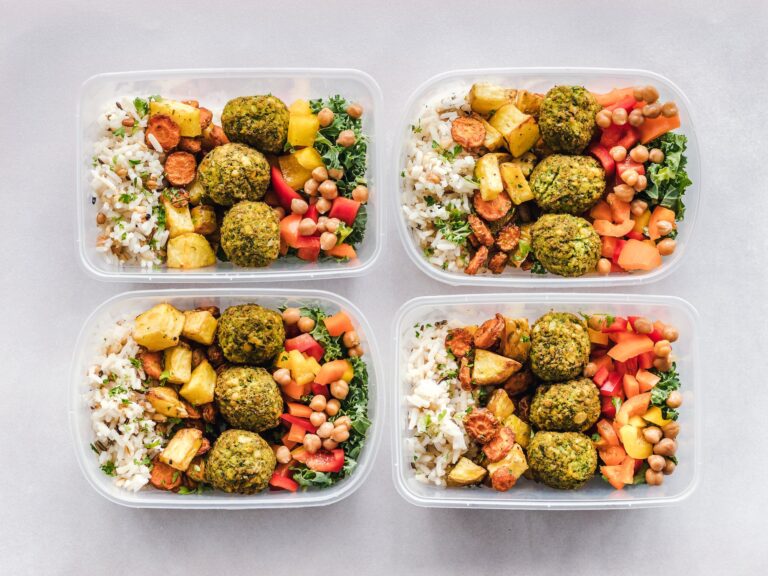How to Make Your Healthy Heart Diet Plan Enjoyable and Exciting
Maintaining a healthy heart is essential for overall health. A balanced diet is an important part of maintaining a healthy heart. However, many people fail to keep to a heart-healthy eating plan because they believe it is boring and bland. In this post, we’ll look at many tactics and innovative ideas for making your healthy cardiac diet plan more pleasurable and engaging. We’ve got you covered with everything from delectable recipes to entertaining meal ideas. Let’s get started!
The Importance of a Healthy Heart Diet
A heart-healthy diet includes meals low in saturated and trans fats, cholesterol, and sodium yet high in fruits, vegetables, whole grains, lean proteins, and healthy fats. This type of diet aids in weight management, blood pressure control, cholesterol reduction, and the prevention of chronic diseases such as heart disease, stroke, and diabetes.
Individuals can improve their cardiovascular health, increase their energy levels, strengthen their immune system, and maintain a healthy weight by following a heart-healthy eating plan.
Choosing nutrient-dense foods on a regular basis and reducing your intake of processed, high-fat, and sugary foods not only benefits heart health but also promotes general well-being. A heart-healthy diet combined with regular exercise and a healthy lifestyle is an effective tool for lowering the risk of cardiovascular disease and improving one’s quality of life.
Understanding a Healthy Heart Diet
It is critical to understand the basic components of a heart-healthy diet before embarking on a journey towards a healthier heart. Your food plan should include the following components:
- Lean Proteins:
Proteins are made up of amino acids, which serve as the building blocks for our cells, tissues, and organs. Lean proteins are protein sources that have lower levels of saturated fat and cholesterol than other protein-rich foods.
2. Fruits and Vegetables:
Fruits and vegetables are important components of a balanced diet because they contain a variety of vitamins, minerals, fibre, and phytochemicals that are important for our overall health and well-being.
3. Whole Grains:
Whole grains are an essential component of a well-balanced diet. Whole grains, as opposed to refined grains like white flour and white rice, include the full grain kernel, including the bran, germ, and endosperm. This means they preserve all of the nutrients, fibre, and phytochemicals included in the grain.
4. Healthy Fats:
Healthy fats have been linked to several health advantages and are required for the body to function properly.
Healthy fats are classified into two types: monounsaturated fats and polyunsaturated fats. Avocados, olive oil, nuts (such as almonds, peanuts, and cashews), and seeds (such as sesame and pumpkin seeds) are high in monounsaturated fats. Fatty fish (such as salmon, mackerel, and trout), walnuts, flaxseeds, and soybean oil all include polyunsaturated fats.
Including healthy fats in your diet has various advantages. For starters, they provide a concentrated source of energy and aid in the absorption of fat-soluble vitamins (vitamins A, D, E, and K), which are required for a variety of bodily processes. Healthy fats also benefit your heart’s health by lowering LDL (bad) cholesterol levels and lowering your risk of heart disease and stroke.
5. Limit Sodium:
Sodium, which is found in table salt and many processed foods, is an important mineral that the body requires in modest amounts. However, excessive salt consumption might be harmful to our health.
High salt consumption has been related to elevated blood pressure, a key risk factor for heart disease and stroke. When we ingest too much sodium, our bodies retain water, resulting in fluid buildup and increased blood volume. This places additional strain on the heart and blood vessels, boosting blood pressure levels. Reduced sodium intake can aid in blood pressure management and the prevention of associated health concerns.

Incorporating Flavorful Ingredients
A healthy cardiac diet, contrary to popular assumption, does not have to be bland and monotonous. You may change your meals into delectable concoctions by using the correct combination of savoury components. Here are some pointers:
- Herbs and Spices:
ExHerbs and spices are flavorful additions to our meals that not only enhance taste but also offer a wide array of health benefits. These natural ingredients are derived from plants and have been used for centuries in various cuisines and traditional medicine practices.
Herbs are the leaves of specific plants, but spices are derived from other plant parts such as seeds, bark, roots, or fruits. They are often used in little quantities to season and aromatise foods.
- Citrus Fruits:
Citrus fruits are a type of fruit of the Rutaceae family that are recognised for their brilliant colours, refreshing flavours, and high vitamin C content. Fruits such as oranges, lemons, limes, grapefruits, and tangerines are among them.
- Garlic and Onions:
Garlic and onions are aromatic plants that have been used for generations as culinary ingredients as well as traditional treatments for a variety of health problems. They are members of the Allium family and are famous for their distinct flavours and strong scents.
- Fresh Herbs:
Fresh herbs are aromatic plants that are commonly used in cooking and culinary preparations to enhance flavour, smell, and visual appeal. They are derived from the leafy sections of plants and are prized for their distinct flavours and smells.
Exploring Heart-Healthy Recipes

To make your healthy heart diet plan enjoyable, it’s essential to have a repertoire of delicious recipes at your fingertips. Here are three mouthwatering recipes to get you started:
1. Grilled Salmon with Lemon and Dill:
This recipe blends heart-healthy salmon with zesty lemon and fresh dill to make a dish that is both delicious and nutritious. Salmon is well-known for its high omega-3 fatty acid content, which is helpful for heart health, inflammation reduction, and cognitive function.
2. Quinoa Salad with Roasted Vegetables:
Use roasted vegetables, protein-rich quinoa, and a light dressing to make a colourful salad. It’s a healthy and filling alternative.
3. Stir-Fried Chicken with Broccoli and Cashews:
Enjoy a stir-fry loaded with lean protein, crisp broccoli, and cashew-based healthy fats.
To add variety and excitement to your meals, try these recipes and other heart-healthy options.
Creative Meal Planning
Meal planning is essential for sticking to a heart-healthy diet. Mealtimes can be made more pleasurable and exciting by being organised and imaginative. Consider the following suggestions:
1. Theme Nights:
Assign various themes to each day of the week, such as Meatless Mondays, Taco Tuesdays, or Stir-Fry Fridays. This increases the joy and anticipation of your meals.
2. Colorful Plates:
Incorporate a range of colourful fruits, vegetables, and proteins to create visually pleasing meals. The vivid colours will tempt your taste buds.
3. DIY Stations:
Set up salad, wrap, or bowl build-your-own stations. Allow everyone to personalise their meals based on their preferences, making it engaging and enjoyable.
4. Family Involvement:
Involve your family or roommates in dinner preparation. Encourage them to share ideas and cook together, establishing a sense of community.
Dining Out the Healthy Heart Way
Maintaining a healthy heart diet does not require you to avoid eating out. You can enjoy restaurant meals while maintaining your heart-healthy goals by making a few wise choices:
1. Menu Research:
Check out the restaurant’s menu online before you go. Look for grilled or steamed foods, salads, and vegetable-based entrees that are heart-healthy.
2. Portion Control:
Restaurant portions are frequently bigger than necessary. To avoid overeating, choose smaller portions or share a meal with a buddy.
3. Smart Substitutions:
Please do not hesitate to request substitutions or modifications to meet your dietary requirements. For example, instead of fried chicken, request grilled chicken or a side of steamed vegetables instead of fries.
4. Sauces and Dressings on the Side:
Request sauces, dressings, and condiments on the side to control the amount you consume. Use them sparingly or opt for healthier alternatives like olive oil and vinegar.
Maintaining Motivation
Maintaining a healthy heart diet requires being motivated in the long run. Here are some tips to help you keep on track:
1.Set Realistic Goals:
Set attainable goals and keep track of your progress. To stay motivated, celebrate tiny accomplishments along the road.
2. Find an Accountability Partner:
Share your experience with a friend or family member who shares your goals. Hold each other accountable and offer support through difficult times.
3. Reward System:
Create a system of rewards for reaching milestones. Non-food rewards can include a relaxing massage, a new book, or an enjoyable outing.
4. Variety and Flexibility:
Avoid boredom by experimenting with new recipes, ingredients, and cooking techniques. Allow yourself occasional indulgences to keep your approach balanced.
FAQs (Frequently Asked Questions)
Is it possible to enjoy a healthy heart diet while still satisfying my cravings for sweet treats?
Absolutely! Indulge in moderation by choosing healthier options such as fruit-based sweets, dark chocolate, or handmade goodies made with natural sweeteners.
Can I follow a healthy heart diet if I have dietary restrictions, such as being vegetarian or vegan?
Certainly! A healthy heart diet can be tailored to fit a variety of food choices. To achieve your nutritional needs, include plant-based proteins, whole grains, and a variety of fruits and vegetables.
Can I consume alcoholic beverages while on a healthy heart diet?
A glass of red wine, for example, can be consumed in moderation as part of a healthy cardiac diet. However, it is critical to consume alcohol in moderation and to keep your entire calorie consumption in mind.
Are there any specific foods that are particularly beneficial for heart health?
Yes, certain foods have been linked to improved heart health. Fatty fish (such as salmon and mackerel), berries, nuts, seeds, leafy greens, and entire grains are examples.
Should I consult a healthcare professional before making significant changes to my diet?
Before making significant changes to your diet, always consult with a healthcare expert, such as a registered dietitian or doctor, especially if you have underlying health disorders or concerns.
Can physical activity complement a healthy heart diet?
Absolutely! Physical activity on a regular basis is critical for overall cardiovascular health. To maximise the advantages and build a strong heart, combine a healthy heart diet with exercise.
Conclusion
Starting a healthy cardiac diet plan does not have to be a difficult undertaking. You can make your heart-healthy journey pleasurable and exciting by incorporating gourmet ingredients, finding delicious recipes, adopting innovative meal planning, and remaining motivated. Remember to get personalised advice and guidance from a healthcare practitioner. Here’s to a healthy heart and a tasty diet!
Read More: Why Keto Diet and Intermittent Fasting are Best for Weight Loss.







